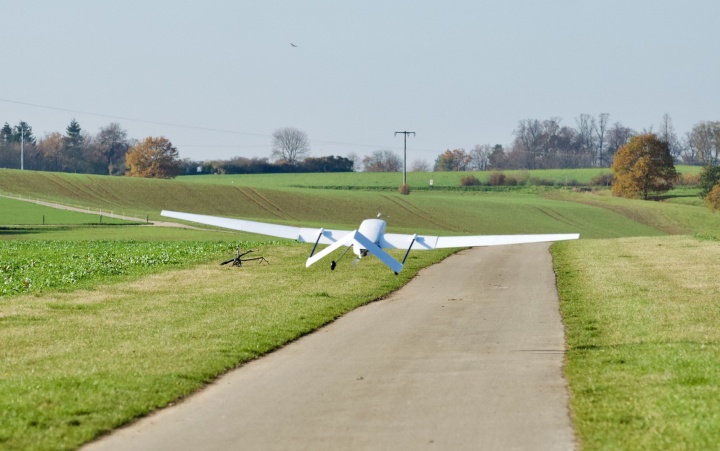Students of Aerospace Engineering at the University of Stuttgart have developed and built the unmanned testing platform Aircraft for Research and Applied Science (ARAS). In the process, they designed the components for it to be able to withstand high loads. After the mechanical and electronic integration was finished, the “UAStudents Gruppe” (a compound made up of Unmanned Aerial System, another word for drone, and students) carried out extensive ground testing before the aircraft successfully took off for the first time in October.
Universal testing platform for flight control system, autopilot or drive train
The aircraft should function as a universal testing platform and should be versatile. It has a maximum take-off weight of 18 kilograms and a wingspan of 4.25 meters. The students constructed ARAS in such a way that a very rigid continuous carrier plate in the fuselage forms its base. System components and the payload, for example a camera or a sensor, are mounted on top of the carrier plate. The outer fuselage covering is simply an aerodynamic fairing, which is very easy to adjust, repair or replace for special payloads or in the event of damage. The students can adjust the position of the wing to fuselage binding along the longitudinal axis of the aircraft without much effort, which means that the center of gravity can be changed for different payloads without using trim weights. The distance between the wing and the tail of the aircraft can also easily be adjusted to fine tune the center of gravity. The tail is the “little wings” at the back of an aircraft.
The wing assembly is divided into three parts, which means that the pluggable outer components can be varied. Also, the students designed the wing roots to be solid enough so that winglets (the bent extensions) can be attached to the ends of the wings. The wing is fitted with landing flaps, which can deflect both upwards as well as downwards. The landing flaps mean that the wings can influence the flight characteristics of the aircraft at both high and low speeds. The battery system is also variable. Depending on the flight program, the person who is controlling the ARAS can fly for up to two hours with a payload of 1.7 kilograms or up to 55 minutes with a payload of 5 kilograms.
Students are currently testing out the flight performance and flight characteristics of ARAS, and so far the aircraft has shown to be “good-natured” and reliable. The group is supervised by scientists from the Institute of Aircraft Design, who organize and manage the finances and provide workshops and machines for the project. After the test flight program is finished, the students can test out different payloads and carry out modifications, for example to the flight control system, autopilot, drive system or energy system.
A related aircraft: AREND takes to the skies in South Africa
ARAS has a brother in South Africa in the form of the Aircraft for Rhino and Environmental Defence (AREND). The AREND Project was founded in 2014 by the University of Stuttgart, the University of Pretoria in South Africa, as well as universities in the USA and Finland. The unmanned aircraft AREND was developed as a specialized sensor aircraft to support efforts by rangers to combat poaching in South African nature reserves. Students have developed and tested AREND in order to be able to distinguish between people and large animals like rhinos in rugged environments. In the meantime the project has become a research and design platform, with which students can learn and experiment with new ideas. Students from the University of Stuttgart take part in exchange programs with the University of Pretoria, where they work on AREND.



